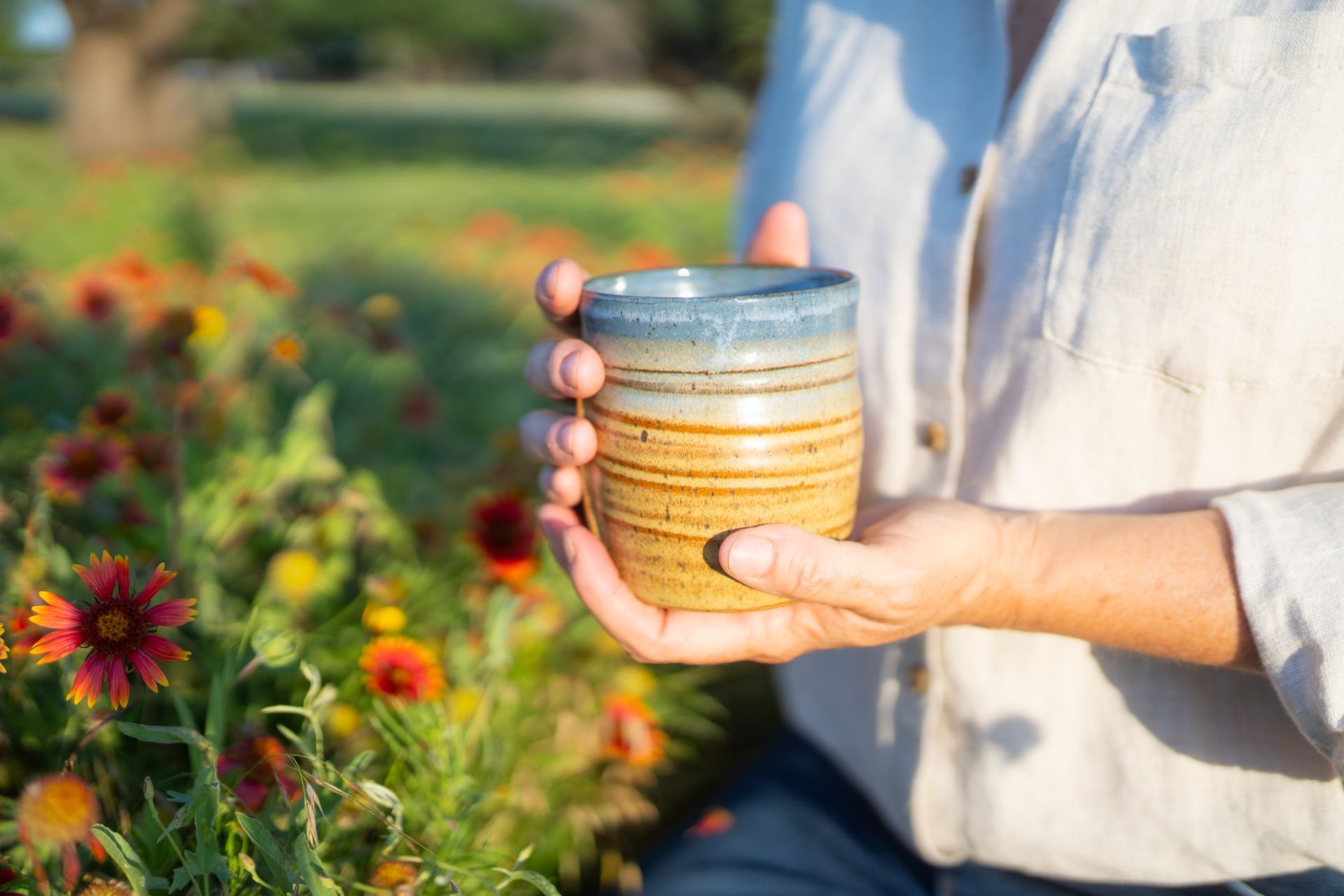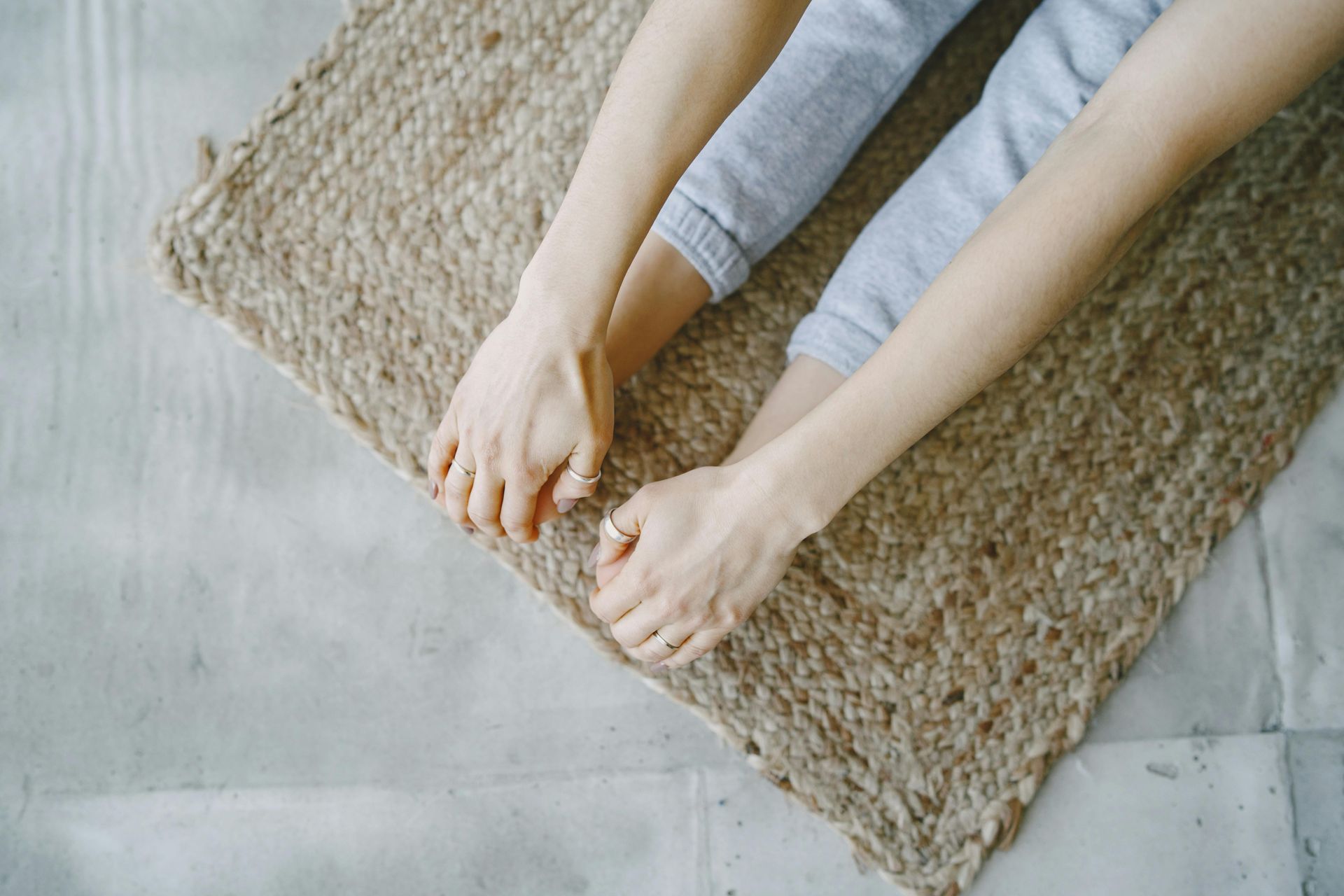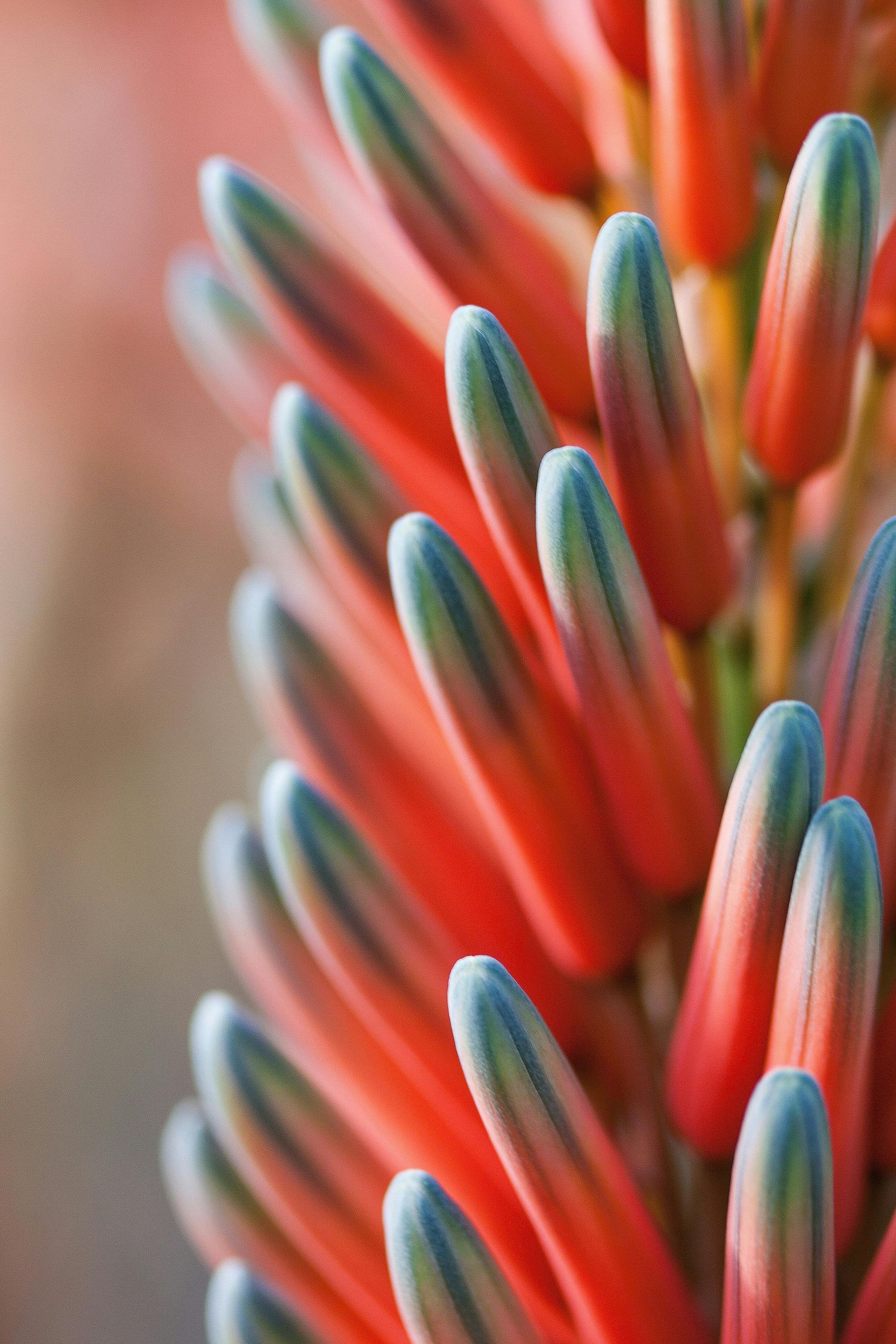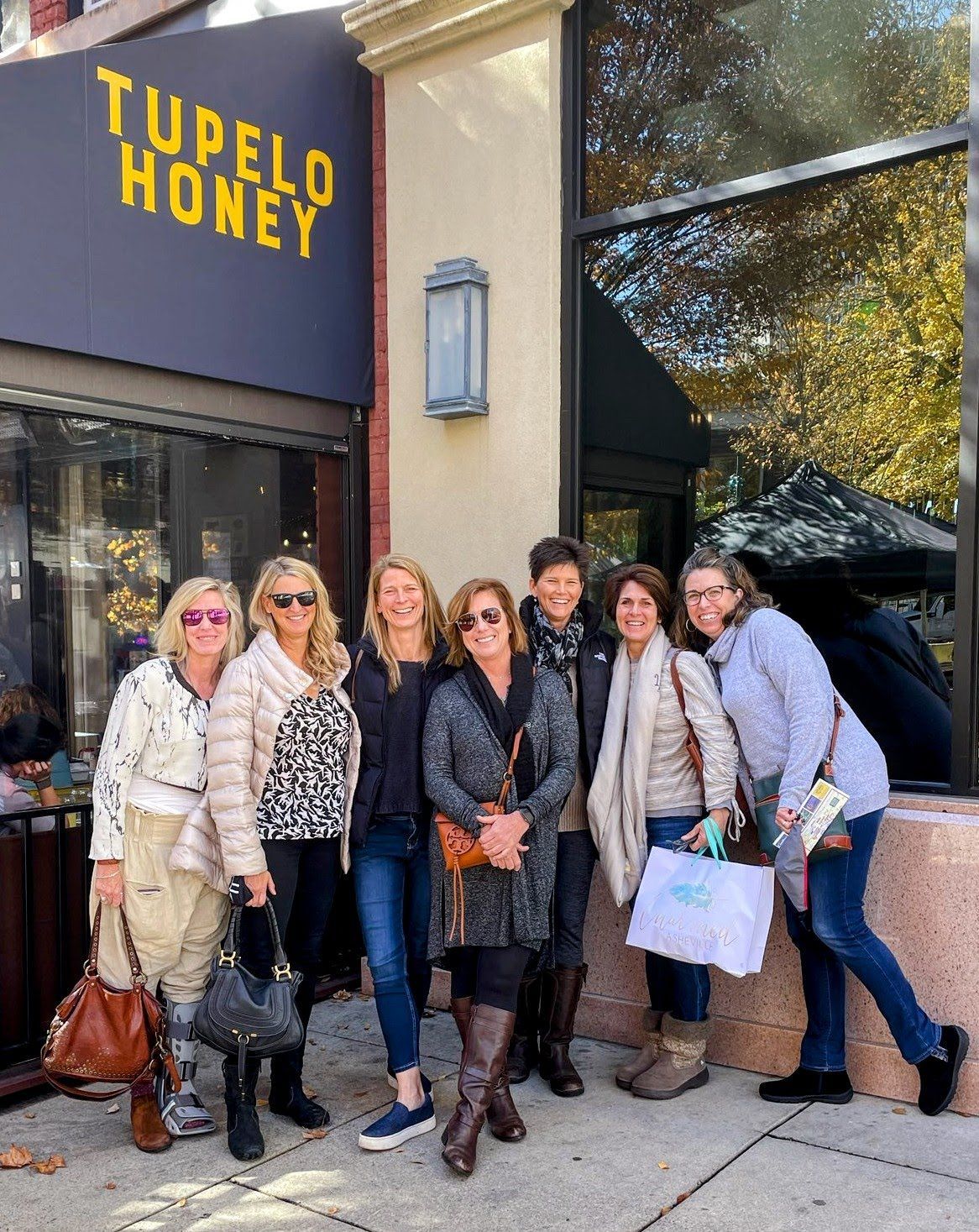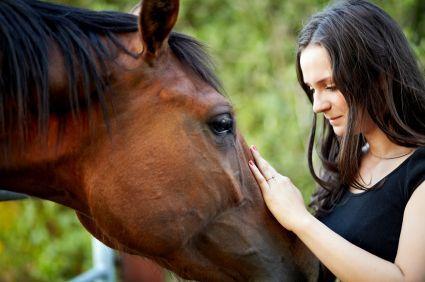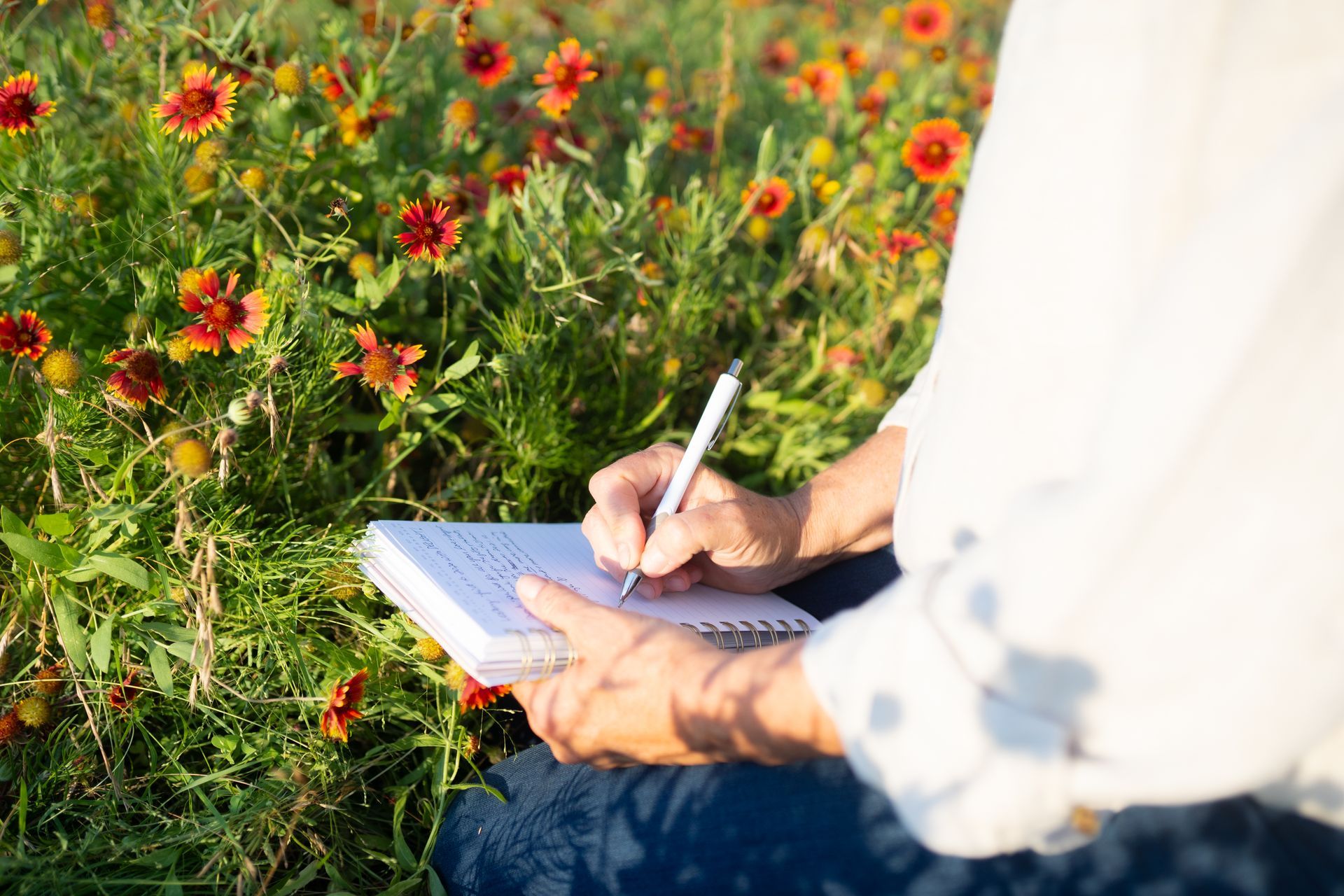
I don’t know about you, but I’ve spent a lot of time being busy — and not a lot of time actually feeling present in my own life.
It’s easy to stay in motion. The lists, the calendar alerts, the constant low-grade pressure to stay productive. But eventually, I started to wonder… is this what being alive is supposed to feel like?
This piece is about what I’ve noticed when I finally slowed down. Not just “taking a break,” but truly pausing long enough to reconnect with my body, my breath, and what actually matters. About what shifts — mentally, physically, emotionally — when I stop rushing and actually reconnect with myself.
Table of Contents
Why You Feel Disconnected When Life Moves Too Fast
How to Slow Down Without Feeling Lazy or Falling Behind
When Presence Leads, the Experience Changes
The Addiction to Information and the Cost of Scattered Attention
What Gets Lost When We Don’t Pause
The Truth About Missing Out
The Practice of Returning
What Becomes Possible
A Way Back to Yourself
In a world that spins faster than our bodies and minds can keep up with, we've convinced ourselves that thinking harder and moving quicker is the answer. But what if it isn't?
What if slowness isn't a lack of productivity, but a different kind of intelligence — one that brings us back to our bodies, our presence, and our connection?
Why You Feel Disconnected When Life Moves Too Fast
The pace of modern life has outstripped what our nervous systems can handle. We evolved for a different rhythm entirely — one where seasons mattered, where daylight dictated our schedules, where we had time to digest not just our food, but our experiences.
While our minds may be able to race ahead — calculating, strategizing, anticipating three moves into the future — our bodies hold the felt sense of experience. And they can't be rushed. They operate on biological time, not digital time.
Your body is where you actually feel things. When something good happens, you feel it in your chest or your stomach before your mind has even labeled it as "joy." When you're sad, your throat tightens. When you love someone, it's not just a thought — there's a physiological sensation that goes with it.
The problem is that your mind is racing ahead, planning the next three things, worrying about what might go wrong, analyzing what just happened. Meanwhile, your body is still back there, trying to process the last experience. It needs time to feel things fully, to let emotions move through, to actually rest between activities. (I shared here about the first time I became consciously aware of that split.)
That gap between where your mind is and where your body is — that's where anxiety lives. It's not that we're failing or doing life wrong. It's that we're trying to live entirely in our heads, and forgetting that we have this whole physiological self that needs attention too — bodies that get tight when we're stressed, that need to move and stretch and breathe deeply.
Animals understand this instinctively. This is what I love about horses. Any attuned horse person will tell you that the horse is in charge of the timeline. And horses don't do time like we do. They don't tell themselves stories about what things mean or rush ahead to what's coming next. They're just here, in this moment, responding to what's actually happening now.
With a horse, you can't fake real presence. You can try to multitask your way through it or hurry them along because you have somewhere else to be, but they know it. They feel your energy, your scattered attention, your impatience. And they respond accordingly. If you want to connect with a horse, you have to slow down to their rhythm, not the other way around.
How to Slow Down Without Feeling Lazy or Falling Behind
This is where it gets tricky: slowing down doesn't feel productive, even when it's deeply generative. Our culture has trained us to equate motion with progress, busy with “important.” That mismatch makes it hard to choose presence over progress, especially when everyone around us seems to be moving at light speed.
A while ago, I experimented with this by setting a timer for 10 minutes and deliberately walking as slowly as I could. Same route I'd walked dozens of times before. Same ten minutes carved out of my day. But entirely different experience.
Instead of rehearsing the rest of my day in my head — the emails to send, the calls to return, the mental chess game of logistics — I dropped into my body. I could feel the space behind my shoulder blades expanding. The length of my spine creating room I didn't know I had. The weight of my bones, solid and grounding. There was a softness, an expansiveness — an ease I rarely feel when I'm powering through a task list.
And here's what surprised me. By the time I got back to my desk, I wasn't behind. If anything, I was more present, more clear about what actually needed my attention. The urgent-but-not-important things seemed to sort themselves out, and what remained felt manageable. The irony? I got MORE done than I would have if I’d not taken those 10 minutes.
I don't think there's anything wrong with being task-oriented. That part of us is needed too. We need to get things done, to show up, to follow through on our commitments. But most of us are overpracticed in that mode — and underpracticed in embodied presence. We've become virtuosos of efficiency and amateurs at simply being.
We don't need to abandon our doing. We just need to balance it with being.
When Presence Leads, the Experience Changes
This came up recently as I began planning an event for about 50 people. It's easy to get swept up in the details — the food, the flowers, the decor, the seating arrangements. There's a certain satisfaction in having everything mapped out, controlled, predictable. Plus that part’s really fun for me and I naturally gravitate to that.
But what I really want to focus on is creating an experience of belonging. I want people to walk into that space and feel engaged with each other, with a sense that we're all here "for" each other. I want the speeches to be meaningful, funny, poignant — to help everyone have a sense that our lives are better off for having spent these few hours together.
That kind of presence only emerges when I slow down enough to feel into what matters first. The difference between creating an event and creating an experience is the one lives in my head, in spreadsheets and timelines. The other lives in my body, in intuition and attunement to what the moment is asking for.
The Addiction to Information and the Cost of Scattered Attention
There's something else I've noticed lately: when I slow down, I'm rarely missing out on anything important. In fact, I'm finally able to receive what's been trying to reach me all along.
Social media gives us the illusion of connection — of being "in the know," of staying current with everyone's lives and opinions and crises. But for me, the more I try to hold everything — every story, every update, every headline, every friend's life change documented in real-time — the more I lose touch with myself.
Recently, I deleted the Facebook app from my phone. Not in a dramatic, "I'm done with social media forever" way, but because I noticed how my nervous system responded every time I opened it. Almost instantly after removing it, I noticed a sense of peace. My shoulders felt lighter and lower. They were no longer up around my ears.
I was no longer pulled into dramas that weren't mine to carry. I wasn't absorbing other people's anxiety as my own, or feeling obligated to have opinions about situations I couldn't influence anyway. I felt less fragmented. More whole. Like the scattered pieces of my attention could finally come home to me.
It turns out, what I'm most at risk of missing isn't some online insight or invitation — it's myself.
And the truth is: I can't connect with others in a meaningful way unless I'm first connected to me. Real intimacy requires presence, and presence requires slowing down enough to actually inhabit my own experience.
What Gets Lost When We Don't Pause
We've been sold the mythology that we can do more by doing multiple things at once. But neuroscience tells us what our bodies already know — multitasking leaves us exhausted and scattered.
But there's a quality of attention — and intention — that emerges in slowness. Call it depth, or intimacy, or presence — it's the difference between skimming the surface of life and actually living it.
There's something about being around little kids that naturally slows you down. They haven't learned yet that efficiency is supposed to be the goal. A three-year-old will spend twenty minutes watching an ant carry a crumb, completely absorbed. They'll ask "why?" about everything, not because they need the information for some future plan, but because they're genuinely curious about how the world works right now.
When we're with them, we remember what it feels like to be interested in things just for the sake of being interested. To notice details we usually miss. To let wonder interrupt our agenda.
Now when I walk from the house to the barn, I try to channel some of that childlike attention. What am I walking past without really seeing? What am I dismissing as unimportant that might actually hold some small wonder?
Today I had some ideas of what I wanted to play with re: my horse, Bentley. But when I got out there it was obvious that his system needed me to go very slow. I slowed way down, let go of my agenda, and just followed his lead. And in that space, I sensed something deep in him that I'd never felt before. It was such a gift, and I would have missed it entirely if I had been focused on having a "productive" session.
The thing is, it was actually incredibly productive — just not in any way I could have planned or imagined. The connection we found in that slow, unstructured time was worth more than any training goal I might have accomplished.
The Truth About Missing Out
We're not just tired. We're not just busy. We're disconnected — from ourselves, from our bodies, from what makes life feel meaningful rather than just productive.
The fear of missing out has become so pervasive that we've forgotten to ask: what are we actually trying not to miss? More often than not, we find ourselves chasing the idea of experiences rather than actually having them. We want connection, but we settle for staying busy with people. We long for presence, but we end up going through the familiar routines — nodding at the right moments, asking the expected questions — while our minds are somewhere else entirely.
Slowing down is how we come home to ourselves. It's how we remember that the richest experiences aren't the ones we document, but the ones we fully inhabit. It's how we discover that community and belonging aren't things we perform or manufacture — they're things we feel. And those feelings require presence. They require a pace we can actually live at, not just survive.
The Practice of Returning
I've been experimenting with what I call "micro-slowdowns" throughout my day. Not grand gestures or life overhauls, but tiny acts of resistance against the cultural current that's always pushing us faster.
Making my morning tea with full attention, feeling the warmth of the mug in my hands before I start drinking. Taking three slow breaths before I start the computer for the day. Stopping to eat lunch at the counter or outside instead of eating at my desk. Pausing for five seconds before writing an email just to make sure I'm communicating from presence rather than reactivity.
These moments add up. They create a different rhythm, a different quality of aliveness. They remind me that I have a choice about how I move through the world.
What Becomes Possible
When I slow down, I remember things. Like how much I actually enjoy the work I do when I'm not rushing through it. How much more creative I am when I give ideas time to develop instead of demanding immediate brilliance. How much more connected I feel to the people I love when I'm not already mentally preparing for the next conversation while we're still in this one.
I remember that my body is wise, and it has information my mind doesn't have access to. That gut feelings are real intelligence, not just metaphor. That the solutions to complex problems often emerge not through force or speed, but through the kind of spacious attention that only comes with slowness.
I remember that rest isn't a luxury or a reward for productivity — it's a biological necessity and a radical act of self-respect in a culture that profits from our exhaustion.
A Way Back to Yourself
You don't have to slow down forever. You don't have to quit your job or move to the countryside or throw your phone in a drawer (though if any of those call to you, trust that impulse).
But just for a moment — maybe today — let yourself try.
Take one task and move through it slower than usual. Feel your feet on the floor. Notice how your ribcage expands when you breathe deeply. Let your shoulders drop away from your ears. Notice what softens when you stop rushing toward the next thing.
Or try this: set a timer for five minutes and do absolutely nothing. Don't meditate, don't plan, don't optimize. Just sit and let yourself be present with whatever arises. Notice the resistance, the urge to be productive, the mental commentary about how this is a waste of time. Notice it all with curiosity rather than judgment.
Because what becomes possible when you slow down isn't just better productivity or less stress, though those might be side effects. What becomes possible is something much more fundamental: the remembering of who you are when you're not performing, not proving, not pushing.
What becomes possible is the return to your own life — not as a series of tasks to complete or problems to solve, but as an experience to be lived, felt, and treasured.
And that might be exactly what you've been longing for all along.
P.S.
If this resonates and you’re looking for a way to practice this work in real life — with real support — you can join the waitlist for
From Pressure to Presence.
It’s a small group experience for deep-thinking, caring women who are done operating at full tilt and want to approach things differently.
Check it out here.

